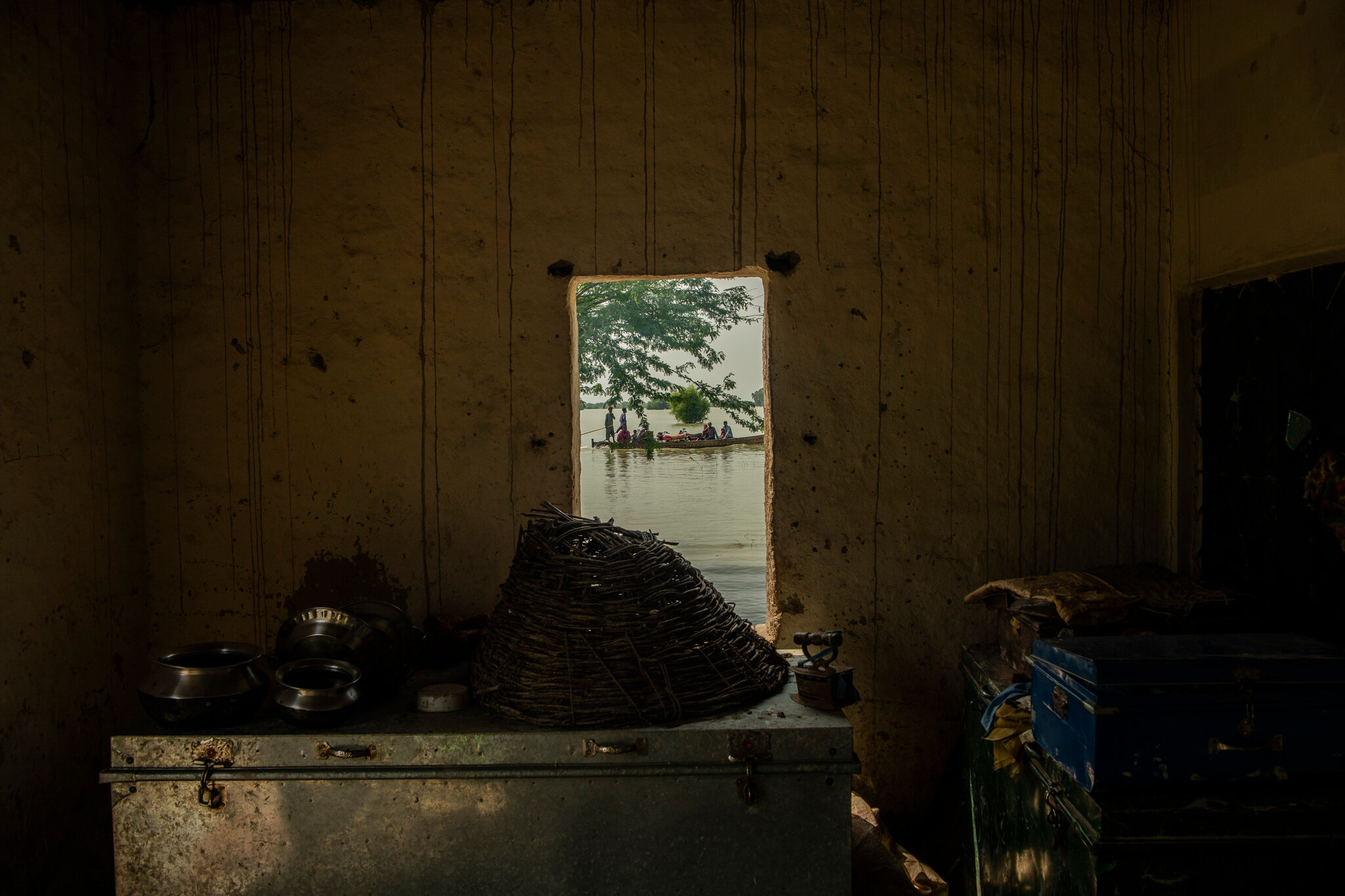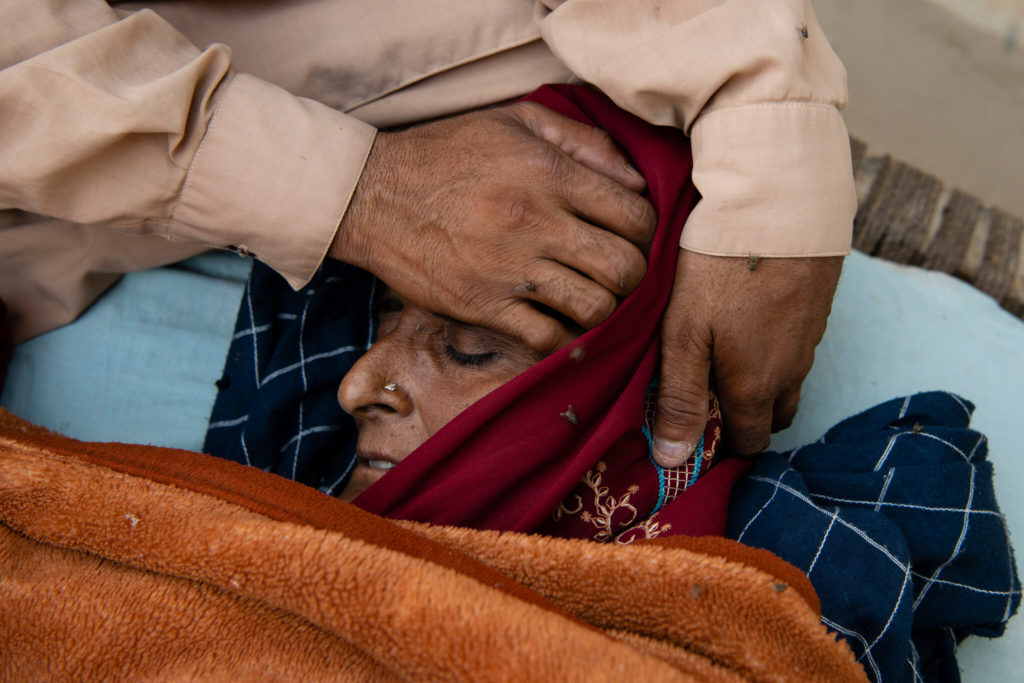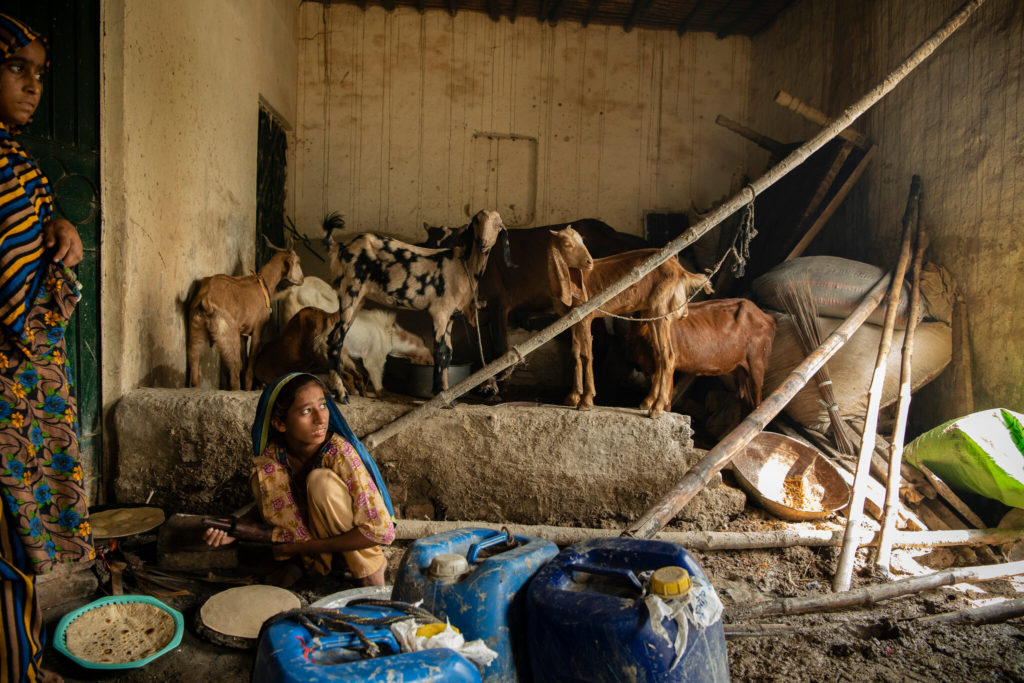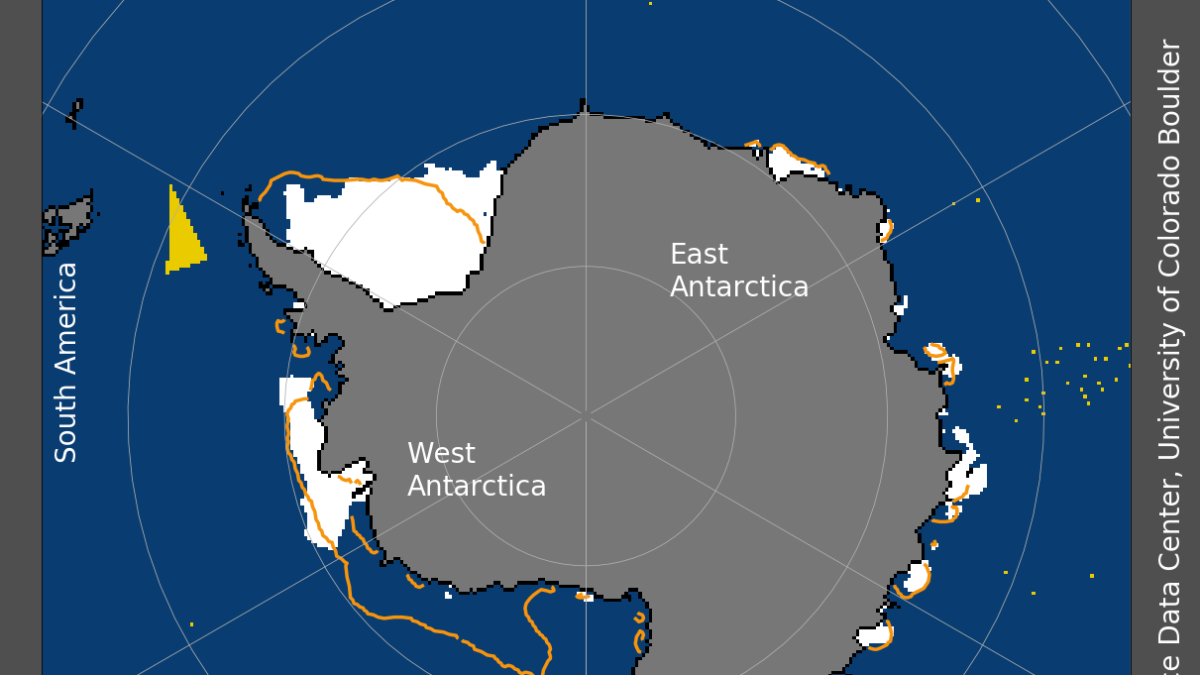In Pakistan’s record floods, villages are now desperate islands – WHO warns of soaring water-borne diseases – “Even the goats are sick”

ISLAMABAD, 18 September 2022 (Press Trust of India) – The World Health Organisation has expressed fears about an impending second disaster of water-borne diseases in Pakistan in the wake of devastating floods that has wreaked havoc in several parts of the country.
In a statement issued by the WHO chief Tedros Adhanom Ghebreyesus, the global health watchdog said that water supply was disrupted in flood-hit areas of Pakistan, forcing people to drink unsafe water which could cause cholera and other diseases.
The WHO has cautioned people across flood-hit areas of Pakistan, precisely the worst affected Sindh province to be extra careful.
Tedros on Saturday highlighted that stagnant water serves as a breeding ground for mosquitoes and spreads vector-borne diseases such as malaria and dengue and urged donors to continue to respond generously to save lives and prevent more suffering.
Separately, the WHO Director general tweeted that he was deeply concerned about the potential for a 2nd disaster in Pakistan, spreading disease and threatening lives following the floodingand asked for quick support to tackle the issue.
If we act quickly to protect the health system and deliver essential services, we can reduce the impact of this impending health crisis, he tweeted.
Situation in Pakistan continues to be grim as the devastating floods have caused havoc in the country, precisely Balochistan and Sindh provinces.
At least 1,545 people have been killed due to the floods across Pakistan and an estimated 16 million children impacted.

The WHO has immediately released USD 10 million from the WHO Contingency Fund for Emergencies which enabled the global health body to deliver essential medicines and other supplies to the country.
The Sindh health department, meanwhile, said a total of 2.5 million patients had been treated at different medical camps across the province from July 1 to date, the Dawn newspaper reported.
As many as 594,241 patients were treated for skin-related diseases, followed by diarrhea (534,800), malaria (10,702), dengue (1,401), and other diseases (120,745,1), stated a report by the Sindh Directorate General Health Services.
The report also showed that 90,398 patients were treated during the last 24 hours, of which 17,919 had diarrhea, 19,746 had skin-related diseases, 695 had malaria and 388 had dengue.
Around 92,797 people were treated in the province on September 15, the paper reported.
In Khyber Pakhtunkhwa province, the health department said that its officials are already struggling to stem the spread of dengue hemorrhagic fever in flood-hit districts of the province, The Express Tribune newspaper reported.
WHO concerned over soaring water-borne diseases due to floods in Pakistan

In Pakistan’s Record Floods, Villages Are Now Desperate Islands
By Christina Goldbaum and Zia ur-Rehman; photographs by Kiana Hayeri
14 September 2022
DADU, Pakistan (The New York Times) – The view from Muhammad Jaffar’s small, mud brick home in southern Pakistan used to bring him a sense of relief. Rolling fields of green cotton shrubs had started just steps from his door, their white blooms offering the promise of enough income for his family to survive the year.
Now his fields, along with other vast swaths of Pakistan, are under green, putrid water. About two weeks ago, in one of the latest rounds of record-shattering flooding that has afflicted the country since June, his land was completely submerged, including his well for drinking water.
“We are living on an island now,” Mr. Jaffar, 40, told visiting New York Times journalists on Tuesday.
The devastating floods have inundated hundreds of villages across much of Pakistan’s fertile land. In Sindh Province in the south, the floodwater has effectively transformed what was once farmland into two large lakes that have engulfed entire villages and turned others into fragile islands. The flooding is the worst to hit the country in recent history, according to Pakistani officials. They warn that it may take three to six months for the floodwaters to recede.
So far, around 1,500 people have died — nearly half of whom are children — and more than 33 million have been displaced from their homes by the floods, which were caused by heavier-than-usual monsoon rains and glacial melt.

Scientists say that global warming caused by greenhouse-gas emissions is sharply increasing the likelihood of extreme rain in South Asia, home to a quarter of humanity. And they say there is little doubt that it made this year’s monsoon season more destructive.
In Dadu District, one of the worst hit areas in Sindh Province in southern Pakistan, the floodwater has completely submerged roughly 300 villages and marooned scores of others. Across the province, around 40,000 square miles of land — about the size of the state of Virginia — is now underwater, officials say.
Where farmers once tilled fields of cotton and wheat, wooden motorboats now chug across the festering pond ferrying people between towns that were saved from the brunt of the flooding and their stranded villages. Scattered across the water are single sandals, medicine bottles and the bright blue books of elementary students that spill out from the windows of half-submerged schools.
Swarms of mosquitoes dance around the treetops poking out from the water. Power lines dangle precariously close to its surface.
Tens of thousands of people whose homes were destroyed have been displaced to nearby towns and cities where they have found shelter in schools, public buildings, and along the roadside and canal embankments. They take refuge in tents cobbled together with spare tarps and rope beds they salvaged before the flood came.
Among the lucky few whose villages were not completely submerged, many have remained in their homes — effectively marooned. The Pakistani authorities have urged people to leave the isolated villages, warning that if thousands remain it could overwhelm already strained aid efforts, cause widespread food insecurity and spark a health crisis as diseases spread.
But the residents have their reasons for staying, they say: They need to protect their prized valuables — surviving livestock, refrigerators and tin roofs — from thieves. The cost of renting a boat and moving their family and belongings is too high. The prospect of living in a tent encampment is too bleak.

Still, their living conditions are miserable. Malaria, dengue fever and waterborne diseases are rampant. The area has been hit with monsoon rains and heat waves since it was submerged. The government has shut off power to the area — a safety measure to prevent people from getting electrocuted — plunging the villages into darkness each night. Most villages have not received any aid, residents say.
“We are abandoned, we have to survive on our own,” said Ali Nawaz, 59, a cotton farmer who lives in Wado Khosa village in Dadu.
The village of Wado Khosa is home to around 150 people who cultivated cotton fields for a large landowner — a feudal system of farming that is common across Sindh. The cotton fields were nearly ready to harvest, residents said, when one night about two weeks ago the floodwater swelled across their fields.
Emerging from their homes at dawn, they were awe-struck. The village was completely surrounded by water that stretched to the horizon.
“My mind was not working. I was thinking what would we do — the children were sobbing,” said one resident, Nadia, 29, who like many women in rural Pakistan, goes by one name.
Since that day, the water has receded by about a foot, locals say. But life on the village-turned-island is barely survivable. Both of the village’s wells were destroyed in the flood, so they must drink salt-tinged water from a hand pump they previously only used for washing clothes and dishes. Nearly everyone in the village is sick with malaria or typhoid, Nadia said.

Simply procuring food is a feat. The price of vegetables has tripled since the flooding began, and Nadia’s family can’t afford to hire a boat to meet them at their remote village and take them to the market. So every few days, her cousin, Faiz Ali, 18, swims for around 20 minutes through the putrid water along what was once a road until he reaches an embankment and walks to market in the town of Johi, which survived the floods.
After buying a small portion of potatoes, rice and vegetables, he fastens the small bags of food to his back, plunges into the water and swims home. He tries to keep his head above the foul smelling lake to avoid ingesting the water and to keep an eye out for the snakes that now slither across its surface.
“It’s difficult. I’m afraid — I’m still afraid every time I go,” he said.
Describing the depth of the water, he stood up and lifted his hand about two feet over his head.
Their family is thankful that Johi town withstood the worst of the flooding. But they and their neighbors say they feel neglected by the government and by aid efforts, and that in the end, they saved themselves. As the floodwater began crashing through the area, residents rushed to buttress the embankment around the town — filling bags with stones, sand, grass and anything else they could find.
Since then, the town has become a critical way station for the residents living in the surrounded villages nearby. Boats making the 30 minute trip to Dadu City tie up along the main drag, where the water is somewhat shallower.
Their hulls are crowded with people, motorcycles, cows and entire herds of goats that farmers brought to the safety of Dadu when the flooding began and were now returning to their homes. At one storefront, shopkeepers laid out large solar panels in the sun and offered to charge people’s phones for a small fee.
One young woman, Amira, 15, and her mother-in-law, Bali, stepped off a boat from Dadu City. Amira was clutching her newborn. A few days before, she went into labor around midnight in the makeshift camp where she and her family have been living near Johi after their village was completely submerged in the floods.
They managed to find a rickshaw to take her to Johi, and then tracked down a boat to take her to the hospital in Dadu City, where she gave birth by cesarean section. Now Amira trudged through the ankle-deep water, through the slippery mud and onto a patch of dry land as she and her family tried to make their way to a temporary home in the mountains.

Most residents say they have not received much, if any, aid from international relief organizations or the government. Occasionally, a boat arrives at the isolated villages with rice and tea from local nonprofits. But most days they simply keep watch and wait, praying for some help to arrive.
In another marooned village nearby, Munir Ahmad, 25, sat on a rope bed in the living room of his small home — its floor now caked in a thick, sticky mud from water splashing through its door. His surviving livestock — six goats, one cow and a few chickens — stood on one side of the room, while his 10-year old sister, Bakhtawar, cooked roti bread over an open flame.
Days earlier, his 5-year old son fell sick with a high fever, and Mr. Ahmad managed to hail a passing boat to take the boy and his wife to the hospital in Dadu City. Now his mother and two younger sisters are both ill, they say, either from the swarms of mosquitoes that ravage them each night or the drinking water they get from a pump nearby.
“Even the goats are sick,” he said.
Still, he says, he and his family want to stay in their home as long as it’s standing.
“I don’t want to live in the tents,” he said. “Home is home.”
In Pakistan’s Record Floods, Villages Are Now Desperate Islands


